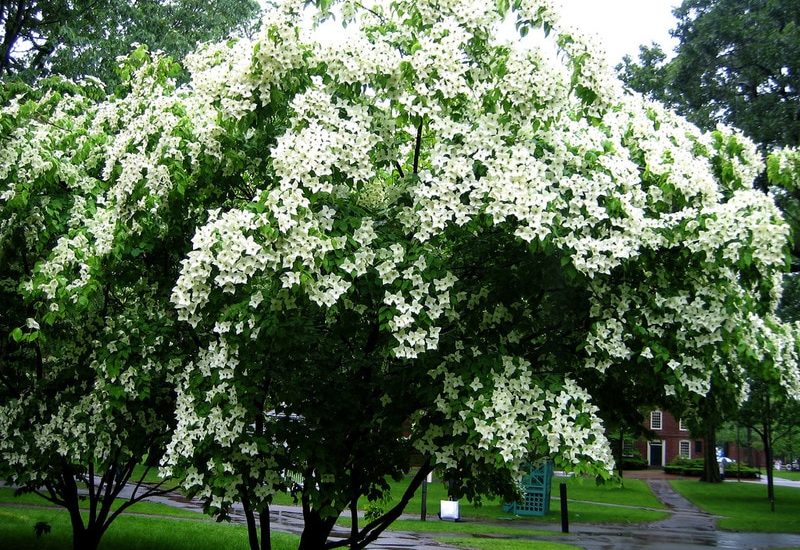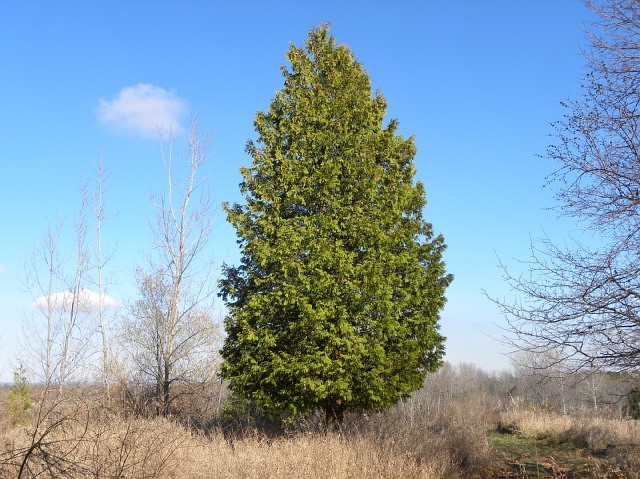The Most Beautiful Ornamental Trees to Grow in Northern California
Ornamental plants are an important part of any garden design. Not only do they provide visual interest and shade, but they can also help improve your other plants’ health. Ornamental plants help to add structure to a garden, and their different shapes and sizes can provide a variety of habitats for other creatures. In addition, their leaves can help to suppress weed growth, and their roots can help to keep the soil in place. That being said, there are different plants that can thrive in different localities. Here are the most suitable ornamental plants to grow in Northern California.
Evergreen Pear (Pyrus kawakamii)
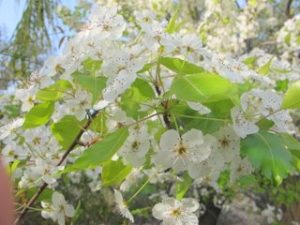
The evergreen pear is a fruit tree that belongs to the rose family. It is native to East Asia and grows in subtropical regions. The evergreen pear is a small tree that reaches a height of 15-20 feet. It has a round crown and dense foliage, making it an excellent choice for screening and hedging. The leaves are dark green and glossy, with a finely serrated edge. In spring, the tree produces small white flowers followed by green fruits that ripen to a yellowish-brown in fall. The Evergreen Pear is native to Japan and Korea but has been introduced to many other parts of the world. It is adaptable to a wide range of climates and soil types and is relatively pest- and disease-free. Because of its attractive appearance and hardiness, the Evergreen Pear is a popular ornamental plant. It can be used as a solo specimen or planted in groupings for greater impact. It is also well suited for foundation plantings, shrub borders, and naturalized areas.
California Buckeye (Aesculus californica)
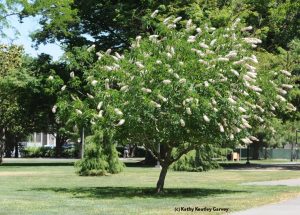
The California buckeye is a deciduous shrub or small tree native to the western United States. It typically grows to 15-30 feet, with a spreading canopy of branches. The leaves are large and palm-shaped, with 5-7 lobes. The flowers are small and white, borne in clusters on the tips of the branches. The fruit is a leathery capsule containing 2-3 shiny brown seeds. The California buckeye is an ornamental plant often grown in gardens and parks. It prefers full sun and moist, well-drained soil. It is relatively drought tolerant once established. It can be propagated from seed, but it is easier to grow from cuttings. The California buckeye can be susceptible to leaf spots and powdery mildew diseases. It is also a favorite food of deer and other browsing animals. Take care to protect young plants if you are growing them in an area where deer are present.
California Ash (Fraxinus dipetala)
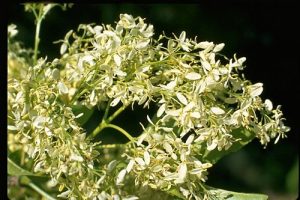
California ash (Fraxinus dipetala) is a species of ash tree native to the southwestern United States and northwestern Mexico. The Californian ash is a small to medium-sized tree, growing to 2–8 m tall with a trunk up to 1 m in diameter. The bark is light grey to white, smooth or lightly fissured, with a distinct diamond-shaped pattern. The leaves are opposite, pinnately compound, 6–13 cm long, with 5–11 leaflets; the leaflets are ovate-lanceolate, 2–4 cm long, and 1–2 cm broad, with a serrated margin. The flowers are borne in panicles 6–12 cm long, each flower with four petals; bees pollinate them. The fruit is a samara 2–3 cm long and 1.5 cm broad, containing a single seed. Fraxinus dipetala is widely distributed in the southwestern United States and northwestern Mexico at altitudes of 600–3,000 m; it occurs on both sides of the Sierra Nevada and the Cascade Range. It is common in the Coast Ranges of central and northern California but rare in the Mojave Desert. It grows in chaparral and oak woodland habitats. The wood of Fraxinus dipetala is hard and dense; it is used for fuel wood and for making furniture, handles, and tool handles. It is also used in landscaping for ornamental plantings.
Creek Dogwood (Cornus sericea)
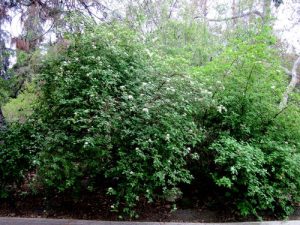
The Creek Dogwood (Cornus sericea) is a deciduous shrub that is native to North America. It typically grows to be between six and twelve feet tall, with a spread of four to eight feet. The leaves are ovate-shaped and have a glossy green texture. In the fall, the leaves turn a deep red or purple color. The flowers of the Creek Dogwood are small and white, and they bloom in clusters in early spring. The shrub’s fruits are round black drupes about half an inch in diameter. The Creek Dogwood is a popular ornamental plant due to its attractive foliage and flowers. It is also a relatively low-maintenance plant and is tolerant of poor soil conditions. Creek Dogwood is an excellent choice for gardeners looking for an easy-to-care-for plant that will add beauty to their landscape.
Norfolk Island Hibiscus (Lagunaria patersonii)
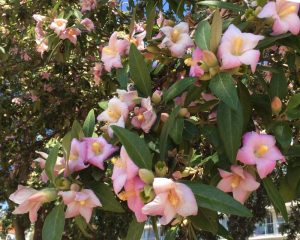
The Norfolk Island Hibiscus, Lagunaria patersonii, is a widely cultivated ornamental plant prized for its large and showy flowers. The species is native to Norfolk Island and the nearby Kermadec Islands, where it grows in forested areas. The Norfolk Island Hibiscus is a tree that typically reaches a height of 5-8 meters. It has a stout trunk and drooping branches covered in dark green, leathery leaves. The flowers of the Norfolk Island Hibiscus are white with a crimson center and can reach up to 20 cm in diameter. They are borne singly or in clusters at the ends of the branches and bloom from spring to autumn. The Norfolk Island Hibiscus is an easy plant to grow and makes an excellent addition to any garden. It tolerates most soil types and exposure levels and is relatively drought-resistant once established. In addition, the plant is relatively unaffected by pests and diseases, making it a low-maintenance choice for gardeners. This makes it an ideal choice for an attractive and trouble-free ornamental plant.
Western Redbud (Cercis occidentalis)
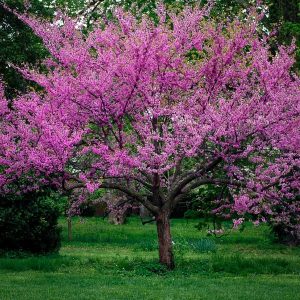
Western Redbud (Cercis occidentalis) is a deciduous shrub or small tree with a spreading, rounded crown. It typically matures to 20-30′ tall with a similar spread but can occasionally grow taller. It is noted for its pretty pink flowers bloom in early spring (April-May) on naked stems before the foliage appears. The flowers are followed by narrow, flat pods (3″ long), which ripen in late summer and often persist into winter. Foliage is variable in shape but is typically ovate to heart-shaped with slightly toothed margins. It emerges reddish purple in spring, matures to green in summer, and finally turns yellow to red-purple in fall. Trunks and branches are covered with smooth gray bark. Western Redbud is native to hillsides, canyons, and lower mountain slopes from central California to Baja California Sur, Mexico, where it typically occurs in chaparral and oak woodlands. It was introduced into cultivation in 1852 by Charles Lewis Lesquereux (1806-89), a Swiss botanist who became the first professor of geology and paleobotany at the University of Pennsylvania. The Western Redbud is a popular ornamental plant due to its attractive flowers and foliage. It is also a relatively low-maintenance tree, making it an ideal choice for gardeners who are looking for an easy-to-care-for plant.
Desert Peach (Prunus andersonii)
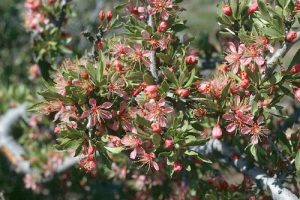
Desert peach (Prunus andersonii) is a small deciduous tree or large shrub that is native to the western United States. It typically grows to 15-20 feet tall, with a spreading crown of dense, drooping branches. The leaves are dark green and elliptical, with small sharp teeth along the edges. In spring, the tree is covered in white or pink blossoms, which give way to small red or orange fruits in early summer. Desert peach is adapted to dry, sandy soils and full sun exposure. It is fairly drought tolerant once established but will produce more flowers and fruit if given regular water during the growing season.
Desert Peaches are relatively easy to grow and can be propagated from seed or cuttings. To propagate from seed, sow the seeds in fall or winter. To propagate from cuttings, take 6-8 inch cuttings from new growth in late spring or early summer. Rooting hormone can promote better root development. Plant the cuttings in well-drained soil, and keep them moist until they are established.
Golden Rain Tree (Koelreuteria paniculata)
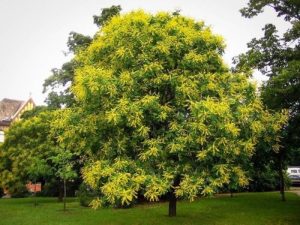
The Golden Rain Tree, also known as Koelreuteria paniculata, is a beautiful deciduous tree native to Asia. It is most commonly found in China and Korea, but it can also be found in Japan, Vietnam, and Nepal. The Golden Rain Tree is a fast-growing tree that can reach a height of 30-40 feet and a width of 20-30 feet. The leaves are alternate, simple, oblong-shaped, and have serrated margins. The leaves are green in the summer and turn yellow or red in the fall. The flowers are yellow and appear in clusters at the ends of the branches. The flowers are followed by orange or yellow fruits that resemble mini pumpkins. The fruit is poisonous to humans but is eaten by birds. The Golden Rain Tree is drought tolerant and can thrive in northern California. It does not need much water or fertilizer and can tolerate some salt. The Golden Rain Tree makes an excellent shade tree and can be planted in urban areas. It is also a popular tree for bonsai.
Marina Strawberry Tree (Arbutus marina)
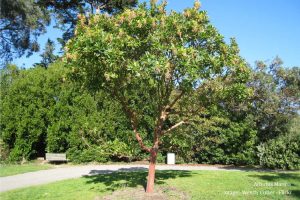
The Marina Strawberry Tree (Arbutus marina) is a species of an evergreen tree that is native to the Mediterranean region. The tree gets its name from the small, strawberry-like fruits that it produces. The Marina Strawberry Tree grows to be 15-25 feet tall, with a trunk that is typically 2-3 feet in diameter. The tree has dark green, leathery leaves that are 4-8 inches long and 2-3 inches wide. The flowers of the Marina Strawberry Tree are white or pink, and they bloom in the springtime. The fruits of the tree are red or orange, and they ripen in the fall. The tree is an important food source for birds and other animals. Marina Strawberry Trees are relatively low-maintenance and are relatively pest- and disease-resistant. These shrubs can be propagated by seed, cuttings, or division, and they make an excellent addition to any landscape. For best results, water your Marina Strawberry Tree regularly during the growing season and mulch around the base of the plant to help retain moisture.
Blue Elderberry (Sambucus nigra ssp. Caerulea)
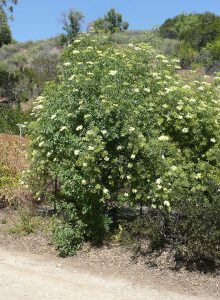
Blue elderberry (Sambucus nigra ssp. Caerulea) is a deciduous shrub that typically grows 10-15 feet tall and 6-10 feet wide. It has a profusion of small, white flowers that appear in early summer, followed by dark blue berries in late summer. The berries are quite sweet and can be eaten fresh or used for making pies or jam. The foliage is a deep green color and turns yellow in fall. Blue elderberry is native to western North America and prefers full sun to partial shade and well-drained soil. It is relatively drought-tolerant once established and tolerant of a wide range of pH levels. This shrub is also deer-resistant and attracts butterflies, bees, and birds. Blue elderberry is an excellent choice for naturalizing an area or creating informal hedges. Other than its ornamental uses, it can also be planted as a specimen shrub or used in foundation plantings.
Australian Tea Tree (Leptospermum laevigatum)
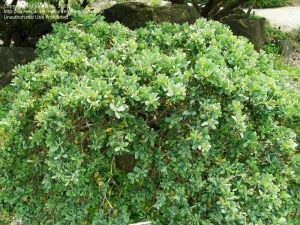
Australian Tea Tree (Leptospermum laevigatum) is an evergreen shrub that is native to Australia. It grows to a height of 15 feet and has leaves that are 2-3 inches long. The flowers are white and bloom from May to June. The fruit is a small, black berry that ripens in September. Tea trees grow best in full sun and well-drained soil. They are tolerant of drought and salt spray. Australian Tea trees can be propagated from seed or cuttings. To propagate from seed, sow the seeds in a moist peat moss mix and place them in a warm location. Keep the soil moist but not soggy. Seeds will germinate in 3-4 weeks. To propagate from cuttings, take 4-6 inch cuttings from new growth in late spring or early summer. Strip the leaves from the bottom half of the cutting and dip the end in rooting hormone powder. Stick the cutting in a pot filled with moistened perlite or sand. Place the pot in a plastic bag to create a humid environment. Keep the cutting moist and place it in a bright, indirect light location. New roots will form in 4-8 weeks.

